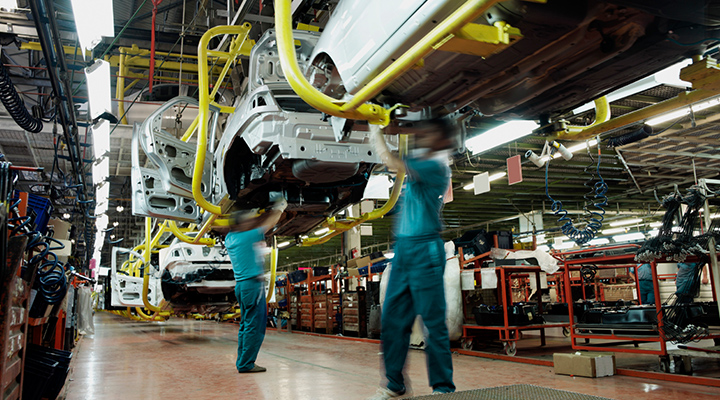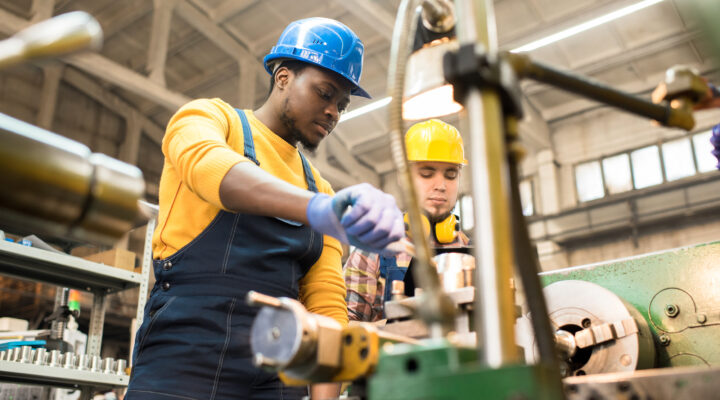
Clean Energy and Advanced Technology Manufacturing
The growing demand for clean energy goods generates enormous potential to create quality manufacturing jobs that tend to have higher pay and stronger union density.
The industrial sector represents a large and growing share of emissions with far less progress made in greenhouse gas (GHG) emissions reduction than many other sectors. Industrial sector emissions now account for 30% of GHG emissions in the United States and have nearly tripled worldwide since 1990. At the same time, these industries are essential to produce the materials and components necessary for clean technology and infrastructure—and for modern life.
Working people are often offered a false choice: you can’t have good jobs and a clean environment. The BlueGreen Alliance rejects this notion and shows clearly that U.S. manufacturing can be the cleanest and most innovative in the world, and that we can create and sustain high-quality jobs building the nation’s future. Establishing robust, high-road, domestic production of clean technology can capture the economic benefits of the clean economy in the United States. Meanwhile transforming energy intensive industry to produce essential materials with far lower emissions can ensure that deploying clean technology doesn’t drive jobs or pollution overseas. Done right, industrial transformation can help roll back economic inequality and reverse the slide in wages, benefits, and workers’ rights that has undermined workers and their communities for decades.
The BlueGreen Alliance’s Manufacturing Agenda —released in 2020—proposes a set of national actions to achieve: global leadership across clean technology manufacturing; cut emissions from the production of essential materials; upgrade and modernize the entirety of the U.S. industrial base within three decades; and undertake a new generation of industrial development that rebuilds good American jobs and is clean, safe, and fair for workers and communities alike.

The growing demand for clean energy goods generates enormous potential to create quality manufacturing jobs that tend to have higher pay and stronger union density.

The transition to clean and electric vehicles (EVs) here in the United States—and in nations across the world—presents an opportunity for the United States to lead in manufacturing the vehicles of the future.

Industrial transformation can roll back economic inequality and reverse the slide in wages, benefits, and workers’ rights that has undermined workers and their communities for decades.

Instead of hitching the nation’s climate goals to exploitative, vulnerable, and polluting production overseas, the United States has the means to build durable, equitable, top-to-bottom domestic supply chains for our clean energy future.

A founding principle of the BlueGreen Alliance is support for a just trade policy for the 21st century that promotes growth and prosperity across all sectors of the global society—not just for multinational corporations and a few elites.
30% The industrial sector is responsible for 30% of energy-related carbon dioxide emissions. (Source)